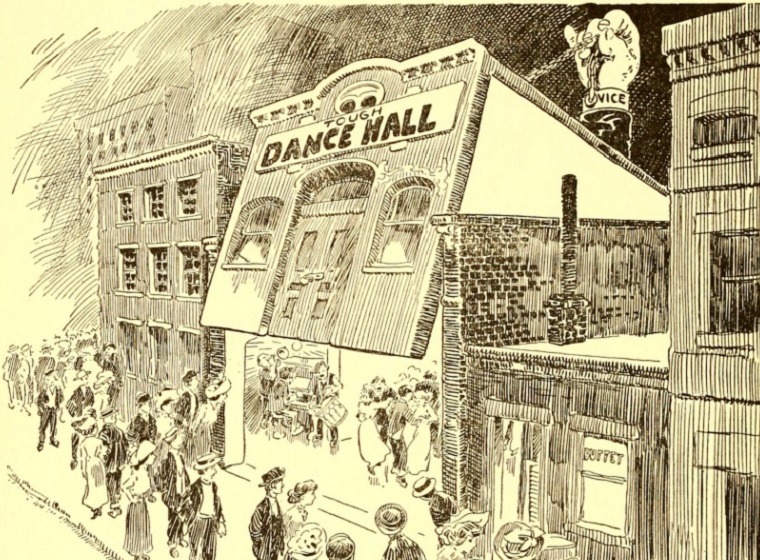On April 5, 1911, the Chicago Vice Commission released The Social Evil in Chicago. The unusually diverse Commission included religious leaders, doctors and representatives of social service agencies. Members included a rabbi, an African--American and two women.
Unlike most 400-page government reports, the report became an instant best seller. The second edition came out April 25 and the third in August. Later editions followed. Apparently, everybody just had to know what the Commission thought about the social evil, i.e. prostitution.
The Commission was against it. Their recommendation: "ABSOLUTE ANNIHILATION THE ULTIMATE IDEAL"
The core difficulty soon emerged:
"So long as there is lust in the hearts of men it will seek out some method of expression. Until the hearts of men are changed we can hope for no absolute annihilation of the Social Evil."
They themselves were the solution:
"Religion and education alone can correct the greatest curse which today rests upon mankind. For this there is a mighty work for agencies and institutions of righteousness in our land."
The best remembered result of the report was the closing of the Everleigh Club, described as "the most famous and luxurious house of prostitution in the country." The middle-aged Everleigh sisters retired as millionaires.
More interesting than the bombastic recommendations are the often sympathetic studies of "existing conditions." Some of the evils seem quaint today: kept women, picnics, motion pictures, ice cream parlors, hotels, steamships, hasty weddings, illegitimate children and immoral literature.
However, the untreatable venereal diseases and brothel conditions are still shocking. Perhaps even worse conditions were hidden.The investigators merely wandered about buying drinks, observing, and interviewing those willing to talk.
Other details provide a look at the times: A young woman working in a department store needed to dress well and could not possibly support herself on the average wage of six dollars a week. The Commission reckoned her costs at $7.60 a week: $2.50 for a cheap room, $3.50 for food, $1.00 for laundry and 60 cents for streetcar fare.
She needed either a family or a boyfriend. Some employed women would accept a few dollars for casual dates on a more or less regular basis. Brothels, paying $25.00 a week, tempted.
The report is a valuable source of information about recreational, educational and working opportunities available to young people in 1910. It offers especially detailed looks at saloons, dance halls, the drug trade and the geography of vice.
Although the modern reader will not read it with the same avid interest exhibited 100 years ago, it is still a Chicago classic. It is available electronically and for reference at several Library locations.
Lords of the Levee: The Story of Bathhouse John and Hinky Dink tells the colorful exploits of the red light district's two aldermen. Sin in the Second City and Gem of the Prairie also look back at the era. Souls of the Skyscraper, another favorite, focuses on the turbulent economic challenges faced by employed women.




Add a comment to: The Social Evil in Chicago: Chicago History Classics